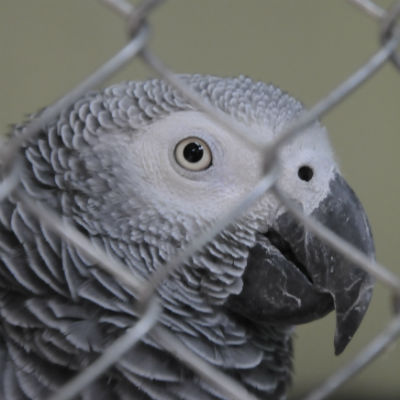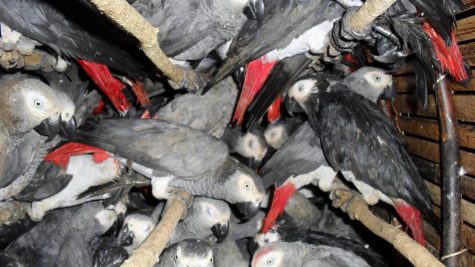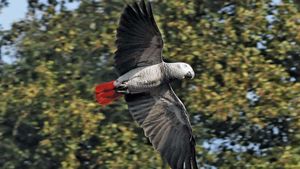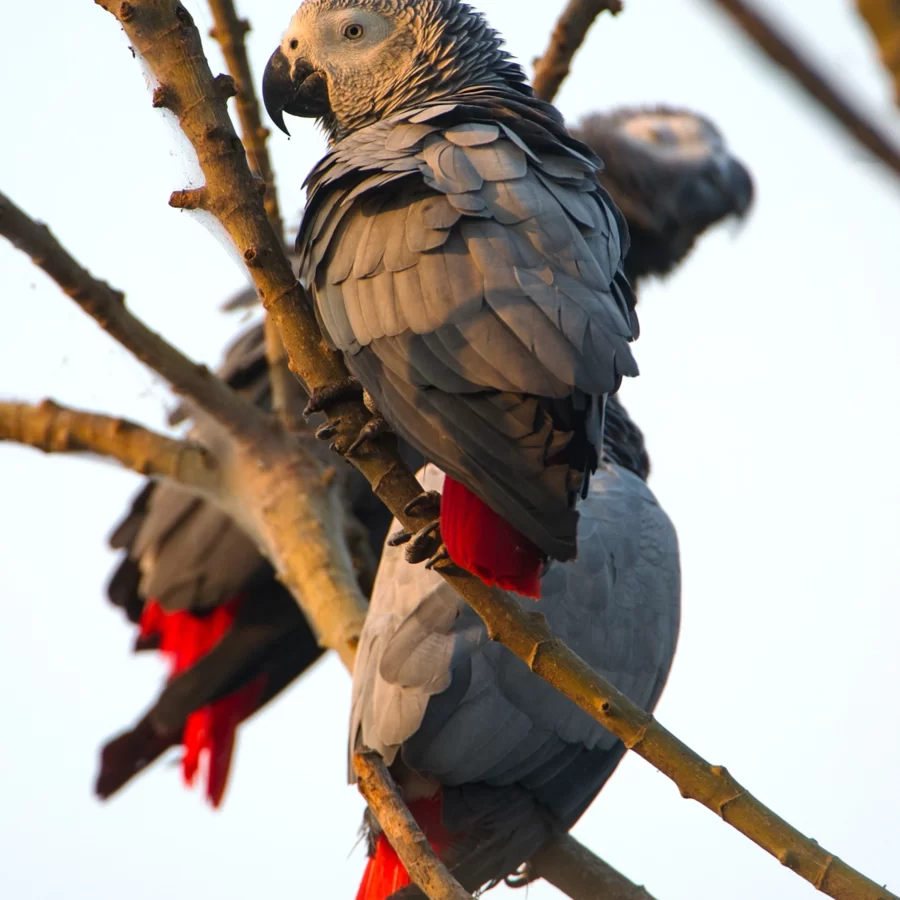Why are African Grey Parrots Disappearing from the Wild…
April 8, 2022
Ghana, Africa, known for its lush forests, diverse animal life, and miles of sandy beaches is home to the African Grey parrots. The Greys have a wide historical range across West and central Africa—1.1 million square miles. A 2016 study published in the Ibis journal reveals that these birds, in high demand around the world as pets, and once abundant in forests all over West and central Africa, now have almost disappeared completely from Ghana.
Illegal Pet Trade
The African Grey parrot is the single most heavily traded wild bird. The United States used to import a huge number of wild-caught African Grey parrots, but this practice was put to a stop with the Wild Bird Conservation Act passed in 1992. In Europe, they passed a similar ban on the importation of wild-caught birds in 2006. In 2018, the bird was listed as endangered by the International Union for Conservation of Nature. “Gray parrot populations in Ghana have declined catastrophically, and the species is now very rare across the country,” said Nigel Collar, of BirdLife International, a global partnership dedicated to conserving birds and their habitats. African Greys tend to be roughly $1,000 – $3,500, making them one of the costly parrots in the entire world. There have been 800,000 recorded legal imports of the parrots from range countries since 1980. Each day numbers change, but this figure doesn’t account for the total number of parrots taken from forests. The African Grey parrot has become very popular in pet trade due to their attractive colors and amazing talent to mimic sounds and words. These birds have a cognitive ability on par with a 4 – 6 year old child, can learn up to 100 words, and can identify objects by color, material, number, and shape. This makes this them one of the most intelligent bird species on the planet. Due to such a large demand, baby greys are being stolen from the wild to supply the demand of the people. African Greys also suffer from habitat loss in particular because they prefer to nest in tall trees that are targeted by loggers.
listed as endangered by the International Union for Conservation of Nature. “Gray parrot populations in Ghana have declined catastrophically, and the species is now very rare across the country,” said Nigel Collar, of BirdLife International, a global partnership dedicated to conserving birds and their habitats. African Greys tend to be roughly $1,000 – $3,500, making them one of the costly parrots in the entire world. There have been 800,000 recorded legal imports of the parrots from range countries since 1980. Each day numbers change, but this figure doesn’t account for the total number of parrots taken from forests. The African Grey parrot has become very popular in pet trade due to their attractive colors and amazing talent to mimic sounds and words. These birds have a cognitive ability on par with a 4 – 6 year old child, can learn up to 100 words, and can identify objects by color, material, number, and shape. This makes this them one of the most intelligent bird species on the planet. Due to such a large demand, baby greys are being stolen from the wild to supply the demand of the people. African Greys also suffer from habitat loss in particular because they prefer to nest in tall trees that are targeted by loggers.

In many cases, poachers have captured the parrots using glue traps made from natural tree sap. After the wild parrots are caught, they are shoved into boxes and small cages to transport to the traders. This process is very long and extremely traumatic for these birds. They are usually not fed proper food and lack fresh water. These birds get very stressed when they are kept in cages for long periods of time. These parrots will remember this process because they have long term memory. As a human it would even be traumatizing to go through what some of these parrots have to go through. Wild grey parrots are particularly susceptible to death in captivity, and it’s been estimated that 45-65 percent of greys perish before reaching pet export markets. The number of birds snatched from central and West Africa in the past 20 years is more than one million. Different methods and glue traps for capturing these birds deliberately damages their wings, and they may never be able to fly again like they once did in their habitats, free in the wild.

How Can You Help?
There are limited ways to help save these unique parrots, but you can find a parrot rescue for neglected, injured, or traumatized parrots. You can donate or even adopt a parrot and give it a new forever home. To adopt a parrot you must have time to give it proper care. To find out more information about parrots check out lafeber.com.
Websites Used














